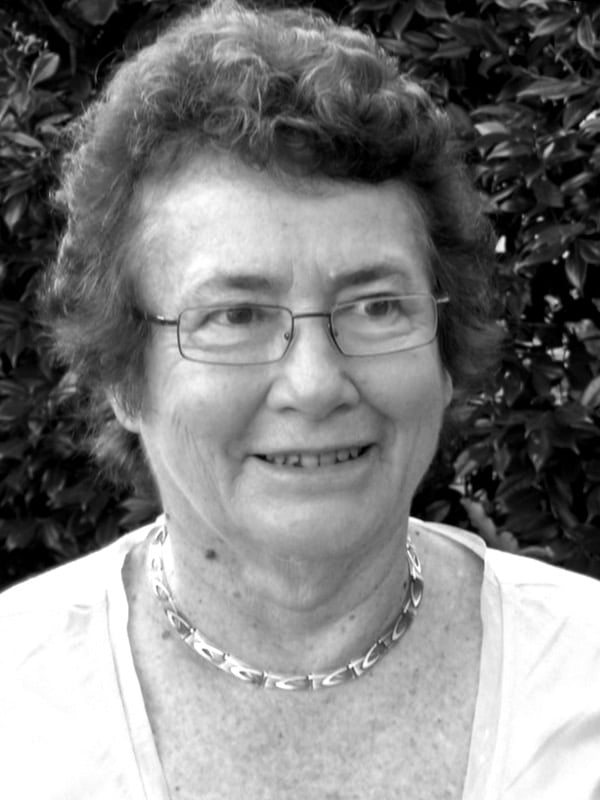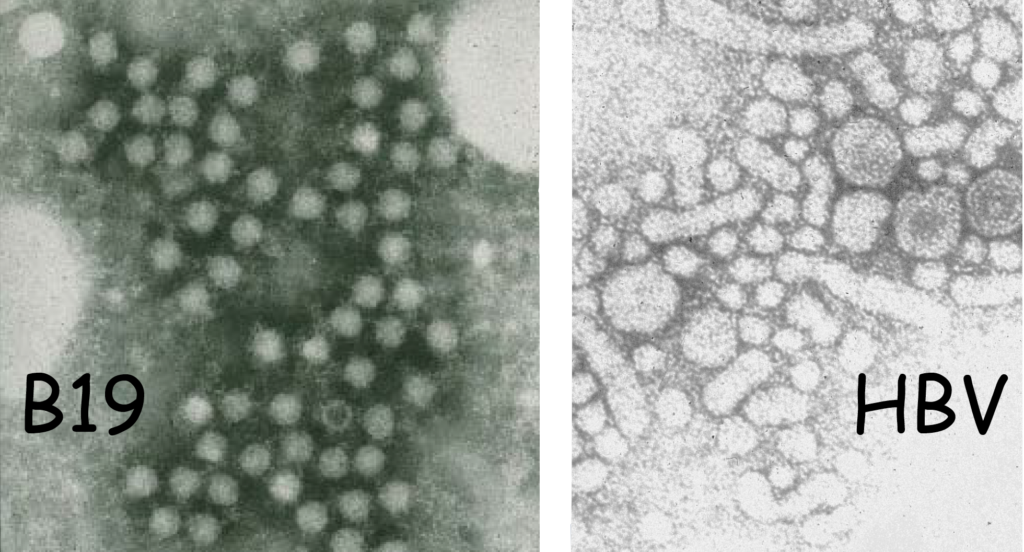Yvonne Cossart

Yvonne Edna Cossart (1934-2014) was an Australian virologist
Cossart was an Australian physician, virologist, and educator best remembered for her pioneering work on parvovirus B19, the causative agent of erythema infectiosum (“fifth disease”). A respected figure in academic medicine, she combined laboratory research, clinical insight, and public health impact, bridging the gap between discovery and practice.
After training in medicine at the University of Sydney, Cossart specialised in infectious diseases and virology during a period when molecular techniques were transforming the field. She played a leading role in defining the clinical and epidemiological significance of B19 infection, demonstrating its links not only to childhood rashes but also to transient aplastic crises, pregnancy complications, and chronic haematological conditions. Her work placed Australia at the forefront of global virology.
Alongside research, Cossart was a dedicated teacher and reformer of medical education. At Sydney, she modernised microbiology curricula, insisting that students learn to view infectious diseases not just as biological phenomena but as conditions affecting people, families, and societies. She was celebrated for her generosity as a mentor and for her commitment to medical ethics and patient-centred care. Her legacy endures in the many students she trained, the patients whose conditions she helped clarify, and the broader field of virology, where her contributions remain foundational.
Biographical Timeline
- Born on August 14, 1934 in Chatswood, New South Wales, Australia
- 1957 – BSc (Med) Hons, University of Sydney; undertook classical virology research in the University of Sydney’s Department of Bacteriology headed by Professor Patrick De Burgh
- 1959 – MB BS (Hons), University of Sydney
- 1960-1962 Registrar in pathology, Royal Prince Alfred Hospital; established a virus diagnostic laboratory within the Department of Microbiology
- 1967 – Consultant virologist. Began research career focused on hepatitis, leading efforts in testing, prevention, and community health interventions. Chairman of the Public Health Laboratory Service Working Party on Hepatitis
- 1973-1976 Convenor and Chairman of the Society for General Microbiology Workshops on Hepatitis
- 1975 – Discovered parvovirus B19, the cause of erythema infectiosum (Fifth Disease)
- 1977 – Senior Lecturer in the Department of Bacteriology at the University of Sydney. Studies of the immunisation of health care workers and the implementation of prophylaxis for babies of hepatitis B carrier mothers
- 1979-1985 – Associate professor, Department of Infectious Diseases, University of Sydney
- 1986-2006 – Served as Bosch Professor of Infectious Diseases and Immunology at the University of Sydney.
- 2003 – Chaired the 11th International Symposium on Viral Hepatitis and Liver Disease, a landmark event that boosted Australia’s role in global hepatitis research.
- 1998 – Officer of the Order of Australia (AO) for “service to medicine as a specialist in infectious diseases, especially in the areas of virological research, epidemiology and disease prevention, and to education“
- Died on December 16, 2014 in Greenwich, New South Wales, Australia
Medical Eponyms
Parvovirus B19 (1975)
Parvovirus B19 is a small, single-stranded DNA virus and the only parvovirus known to infect humans. It is the causative agent of erythema infectiosum (fifth disease), a mild exanthematous illness in children, but it can also cause aplastic crises in patients with haemolytic anaemia, hydrops foetalis, and chronic anaemia in immunocompromised hosts.
1975 – Cossart working at the Virus Reference Laboratory, Colindale, and South London Blood Transfusion Centre described parvovirus-like particles in the serum of blood donors during screening for hepatitis B virus. The serum sample, which contained parvovirus-like particles, was coded as panel B and number 19 and hence named “parvovirus B19”.
A parvovirus-like antigen has been found in sera of nine healthy blood-donors and two patients. Its pathogenicity is unknown, but 30% of adults possess specific antibody. The new agent can be confused with hepatitis-B antigen both morphologically and serologically.
Cossart 1975

In 1975, for QA of hepatitis B testing in the BTS we included an example of a group of donor sera from South London (Barbara Cant and Dianne Widdows) which gave anomalous results at the Virus Reference Lab. It was sample 19 in panel B
To be positive in this gel diffusion test the antigen concentration had to be high, so we compared the appearance with HBV in the electron microscope
Cossart 2013
1977 – On testing the sera of all the lab staff, 40% were positive so B19. Cossart concluded this was a common human infection with no known disease association – an ‘orphan parvovirus’. The virus samples were frozen and stored.
1979 – A cluster of cases of aplastic anaemia was observed in children of an extended West Indian family with sickle cell disease in South London. Samples were sent to the Virus Reference Lab where they were tested against a selection of ‘orphan’ agents. B19 was the only one positive.
John Pattison et al noted the association between aplastic crisis and B19 infection. Subsequently specific IgM antibody tests were-developed, confirming these diagnoses, and further cases of aplastic crisis found to share the same aetiology.
1983 – Mary Anderson et al investigated an outbreak of erythema infectiosum in North London investigating cases for evidence of human parvovirus infection
Parvovirus-specific IgM was detected in all sera from the 31 cases in children and 2 adolescents. Those sera taken soon after the onset of the rash were strongly positive and the amount of specific IgM diminished as the length of time between the rash and the serum specimen increased. On the basis of these preliminary results we propose that the human parvovirus is the hitherto elusive agent of erythema infectiosum.
Anderson et al 1983
Key Medical Contributions
Hepatitis Research
Cossart made major contributions to the understanding of viral hepatitis, particularly the epidemiology and virology of hepatitis B. Working at the Royal Free Hospital in London during the 1970s, she was part of the team investigating blood-borne transmission of hepatitis.
Her work helped clarify the importance of hepatitis B surface antigen (HBsAg) as both a diagnostic marker and a route of transmission. This research provided a scientific basis for screening blood donors, significantly reducing transfusion-related hepatitis.
In Australia, Cossart continued to work on viral hepatitis after her return in the 1970s, contributing to the development of vaccination policies and raising awareness of viral hepatitis as a global health problem. She also played a role in the early identification of non-A, non-B hepatitis (later hepatitis C), recognizing the need for further viral classification before the agent was fully characterized in 1989.
Rubella and Congenital Rubella Syndrome
Cossart contributed significantly to the understanding and prevention of rubella, particularly its devastating effects on pregnancy. She worked on clarifying the epidemiology of congenital rubella syndrome (CRS), which causes deafness, cataracts, congenital heart disease, and neurodevelopmental impairment in infants.
Her advocacy and research helped shape public health vaccination strategies in Australia. Cossart was among those calling for widespread rubella immunisation of schoolgirls and women of childbearing age to prevent CRS, a policy that dramatically reduced congenital infections.
She also contributed to laboratory diagnostic methods for rubella infection and immunity, helping clinicians determine which women were at risk during pregnancy.
Teaching and Medical Philosophy
Cossart was widely admired as a teacher, mentor, and advocate for patient-centred medicine. She believed that medical training should extend beyond technical skills, emphasising ethics, communication, and compassion.
At the University of Sydney, she was instrumental in reshaping curricula in microbiology and infectious diseases, encouraging students to think critically about science and its social impact. Colleagues and trainees recalled her ability to inspire curiosity, often reminding them that “good medicine depends as much on understanding people as it does on understanding pathogens.”
Major Publications
- Cossart YE. Thesis: Cellular aspects of virus infection and neoplasia, as seen in extromelia infection of the Ehrlich ascites tumor in vivo, and in vitro. 1957
- Cossart YE, Field AM, Cant B, Widdows D. Parvovirus-like particles in human sera. Lancet. 1975 Jan 11;1(7898):72-3.
- Cossart YE. Virus hepatitis and its control. 1977
- Cossart YE. History and Philosophy of Medicine for Medical Students. 1994
- Cossart Y. The shadow of Pasteur: an historical review. Pathology. 1995 Oct;27(4):302-5.
- Cossart Y. Virology before and after HIV. Vet Microbiol. 1995 Sep;46(1-3):243-7.
- Sefton AJ, Cossart Y, Freckelton L. 150 years of the Faculty of Medicine. 2006
- Cossart YE. Human Parvovirus B19. 2013
References
Biography
- Mellor L. Cossart, Yvonne. Faculty of Medicine Online Museum and Archive, University of Sydney. 2008
- Cossart, Yvonne Edna (1934 – 2014) Encyclopedia of Australian Science and Innovation
- Bibliography. Cossart, Yvonne E. WorldCat Identities
Eponymous terms
- Pattison JR, Jones SE, Hodgson J, Davis LR, White JM, Stroud CE, Murtaza L. Parvovirus infections and hypoplastic crisis in sickle-cell anaemia. Lancet. 1981 Mar 21;1(8221):664-5.
- Anderson MJ, Jones SE, Fisher-Hoch SP, Lewis E, Hall SM, Bartlett CL, Cohen BJ, Mortimer PP, Pereira MS. Human parvovirus, the cause of erythema infectiosum (fifth disease)? Lancet. 1983 Jun 18;1(8338):1378.
- Pattison JR. B19 virus–a pathogenic human parvovirus. Blood Rev. 1987 Mar;1(1):58-64.
- Anderson MJ. Parvoviruses as agents of human disease. Prog Med Virol. 1987;34:55-69.
- Young NS, Brown KE. Parvovirus B19. N Engl J Med. 2004 Feb 5;350(6):586-97.
- de Jong EP, Walther FJ, Kroes AC, Oepkes D. Parvovirus B19 infection in pregnancy: new insights and management. Prenat Diagn. 2011 May;31(5):419-25.
- Servant-Delmas A, Morinet F. Update of the human parvovirus B19 biology. Transfus Clin Biol. 2016 Feb;23(1):5-12.
- Hill MA. Abnormal Development – Parvovirus. Embryology
Eponym
the person behind the name
BMedSci (infectious disease) MB ChB, Edinburgh University. Emergency Medicine training. Currently working at Sir Charles Gairdner Hospital, Perth Austraslia.
BA MA (Oxon) MBChB (Edin) FACEM FFSEM. Emergency physician, Sir Charles Gairdner Hospital. Passion for rugby; medical history; medical education; and asynchronous learning #FOAMed evangelist. Co-founder and CTO of Life in the Fast lane | On Call: Principles and Protocol 4e| Eponyms | Books |

